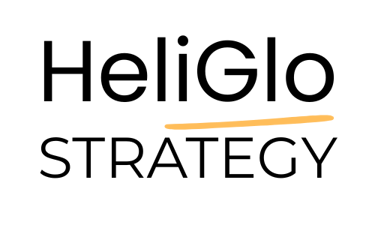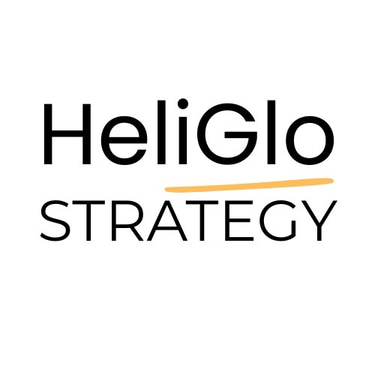5 Things That Make a Freelance Offer Stand Out
Crafting the perfect freelance offer can feel like throwing spaghetti at the wall and hoping something sticks. You pour your heart into proposals, customize each one for the client, and then... crickets. Sound familiar?
The truth is, most freelancers struggle with this because they're missing key elements that make offers truly compelling. You're not just competing on price or even skill—you're competing on how well you can communicate your value and make the client feel confident about choosing you.
The good news? There are specific strategies that consistently help freelance offers rise above the noise. When you understand what clients are really looking for, you can position yourself as the obvious choice, not just another option in their inbox.
Let's dive into the five elements that transform average proposals into standout offers that clients can't ignore.


1. Lead with Client-Focused Solutions, Not Your Services
Most freelancers make the mistake of starting their proposals with what they do: "I'm a graphic designer with 5 years of experience..." or "I specialize in content marketing and social media management..."
Here's the problem: clients don't care about your services until they understand how those services solve their specific problems.
Instead, start by demonstrating that you understand their challenge. Reference specific details from their project posting or website. Show them you've taken the time to understand their business, their goals, and their pain points.
For example, instead of opening with "I'm a web developer," try something like: "I noticed your current website takes 8 seconds to load, which could be costing you up to 40% of potential customers. I can help you create a fast, mobile-optimized site that converts visitors into paying customers."
This approach immediately positions you as someone who gets it. You're not just another service provider—you're a problem-solver who understands their business.
2. Provide Concrete Examples of Similar Success
Generic statements like "I help businesses grow" or "I deliver high-quality work" won't cut it. Clients need proof that you can deliver results, and the best proof comes from specific examples.
Share case studies or brief stories that demonstrate your ability to handle similar projects. Include measurable outcomes whenever possible. Numbers tell a story that generic promises simply can't match.
For instance: "I recently helped a SaaS startup increase their email open rates from 18% to 34% by restructuring their welcome sequence and implementing personalized subject lines. The result was a 45% increase in trial signups within 60 days."
This approach works because it shows exactly what you can do, not just what you say you can do. It helps clients visualize the potential outcomes of working with you.
If you're new to freelancing and don't have extensive case studies yet, you can still provide examples from personal projects, volunteer work, or even detailed explanations of how you would approach their specific challenge.
3. Present a Clear Process and Timeline
Uncertainty kills deals. When clients don't understand how you work or what to expect, they naturally gravitate toward proposals that feel more structured and predictable.
Break down your approach into clear phases or steps. Explain what happens at each stage, what deliverables they'll receive, and realistic timelines for completion.
A well-structured process might look like this:
Phase 1: Discovery & Strategy (Week 1)
Stakeholder interviews and brand audit
Competitor analysis and market research
Strategy document with key recommendations
Phase 2: Creative Development (Weeks 2-3)
Initial concept presentations
Two rounds of revisions based on feedback
Final design assets and brand guidelines
Phase 3: Implementation & Launch (Week 4)
File preparation and delivery
Launch support and troubleshooting
Final project review and optimization recommendations
This level of detail accomplishes two things: it shows you're organized and professional, and it helps clients understand exactly what they're getting for their investment.
4. Address Potential Concerns Before They're Raised
Every client has unspoken concerns when reviewing proposals. They might worry about communication, missed deadlines, going over budget, or whether you'll understand their vision.
The smartest freelancers anticipate these concerns and address them proactively in their proposals. This demonstrates emotional intelligence and helps eliminate common objections before they become deal-breakers.
Common concerns you might address include:
Communication: "I provide weekly progress updates every Friday, and I'm available via email or Slack during business hours for any questions or feedback."
Budget management: "All costs are outlined upfront, and I'll notify you immediately if any requested changes would affect the project scope or timeline."
Quality assurance: "Every deliverable goes through my three-step review process before delivery, and I include one round of revisions in the base price to ensure your complete satisfaction."
Timeline concerns: "I build buffer time into all my projects to account for revision cycles and unexpected challenges, so you can count on meeting your launch date."
By addressing these concerns upfront, you remove barriers to saying yes and position yourself as a thoughtful, professional partner.
5. Make It Easy to Say Yes
Your proposal shouldn't end with "Let me know if you're interested." That puts the burden on the client to figure out next steps, and busy people often postpone decisions when the path forward isn't crystal clear.
Instead, make it incredibly easy for them to move forward. Provide clear next steps, flexible options, and remove as much friction as possible from the decision-making process.
Consider including:
Multiple package options: Give clients choices that fit different budgets and timelines. This increases your chances of finding a fit and allows clients to self-select based on their priorities.
Clear next steps: "If you'd like to move forward, simply reply to this email, and I'll send over the contract and project kickoff questionnaire."
Flexible start dates: "I have availability to start immediately or can accommodate a later start date if that works better for your timeline."
Risk reversal: "If you're not completely satisfied with the first milestone deliverable, I'll revise it at no charge or provide a full refund."
The easier you make it for clients to choose you, the more likely they are to actually do it.
Start Creating Offers That Win
These five elements work together to create proposals that stand out in crowded inboxes. They demonstrate professionalism, reduce client risk, and make it easy for prospects to envision working with you.
Remember, your proposal is often the first real impression clients have of how you work. Make it count by focusing on their needs, providing concrete proof of your abilities, and removing every possible barrier to moving forward.
The next time you're crafting a proposal, run through this checklist. Are you leading with client-focused solutions? Have you provided specific examples of your success? Is your process clear and your timeline realistic? Have you addressed potential concerns and made it easy to say yes?
Master these elements, and you'll find that more of your proposals turn into paying projects. Your freelance business will grow not just because you're skilled, but because you know how to communicate that skill in a way that clients can't ignore.
Support
hello@heliglo.com
© 2025 HeliGlo. All rights reserved.
+41782286471
We usually reply within 1-2 business days


